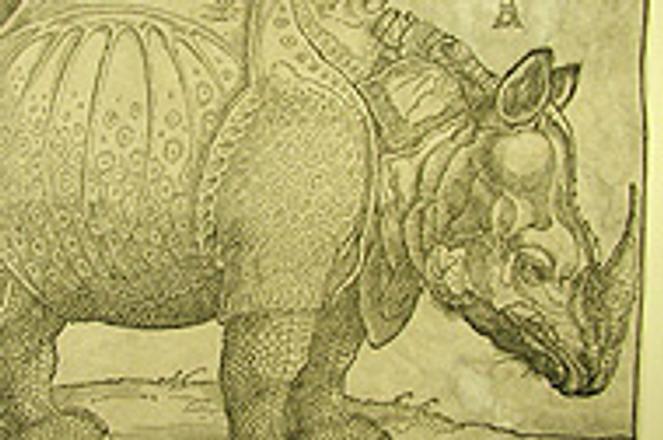Woodcut of a Rhinoceros, cut by Albrecht Dürer in 1515.
photo: Museum of History
WHEN ALBRECHT Dürer painted one of his artworks at the order of the Emperor Maximilian I, the ruler so esteemed the artist that he kept the ladder that Dürer used for himself, said curator Ivan Havlice while introducing the exhibition Albrecht Dürer and his Age - The Triumph of Emperor Maximilian I on May 3.
The exhibition, which will be shown at the Bratislava castle until June 30, is divided into three sections.
The first shows works by Dürer, the second presents the works of his contemporaries and the third shows the cycle The Triumph of Emperor Maximilian I and some military exhibits from the collections of the Eastern Slovak Museum in Košice. A total of one hundred of paintings and drawings are on display at the castle.
The exhibits come from the unique collection of Imrich Henszlmann, a doctor, university professor, art historian and honorary freeman of the city of Košice. He gifted his collection of books, paintings, drawings, coins and archaeological materials to the Eastern Slovak Museum in 1888.
The collection includes the graphic works of well-known schools of art in Italy, Germany, and France of the 15th to the 18th centuries, represented by renaissance artists such as Albrecht Dürer, Albrecht Altdorfer, Marcantonio Raimondi and Hans and Barthel Beham.
The Triumph of Emperor Maximilian I consists of three monumental graphic cycles commissioned by Maximilian I. Dürer, along with Albrecht Altdorfer, Hans Springinklee, Hans Burgkmair, Hans Schäfelein, Leonhard Beck, Erhard Schön and probably also Dürer's brother Hans participated in creation of the cycle of 147 woodcuts.
"The oldest woodcuts, eight of Hans Burgkmair works from the years 1508 and 1511, can be considered the most valuable works in the Triumph," said Hlavice.


